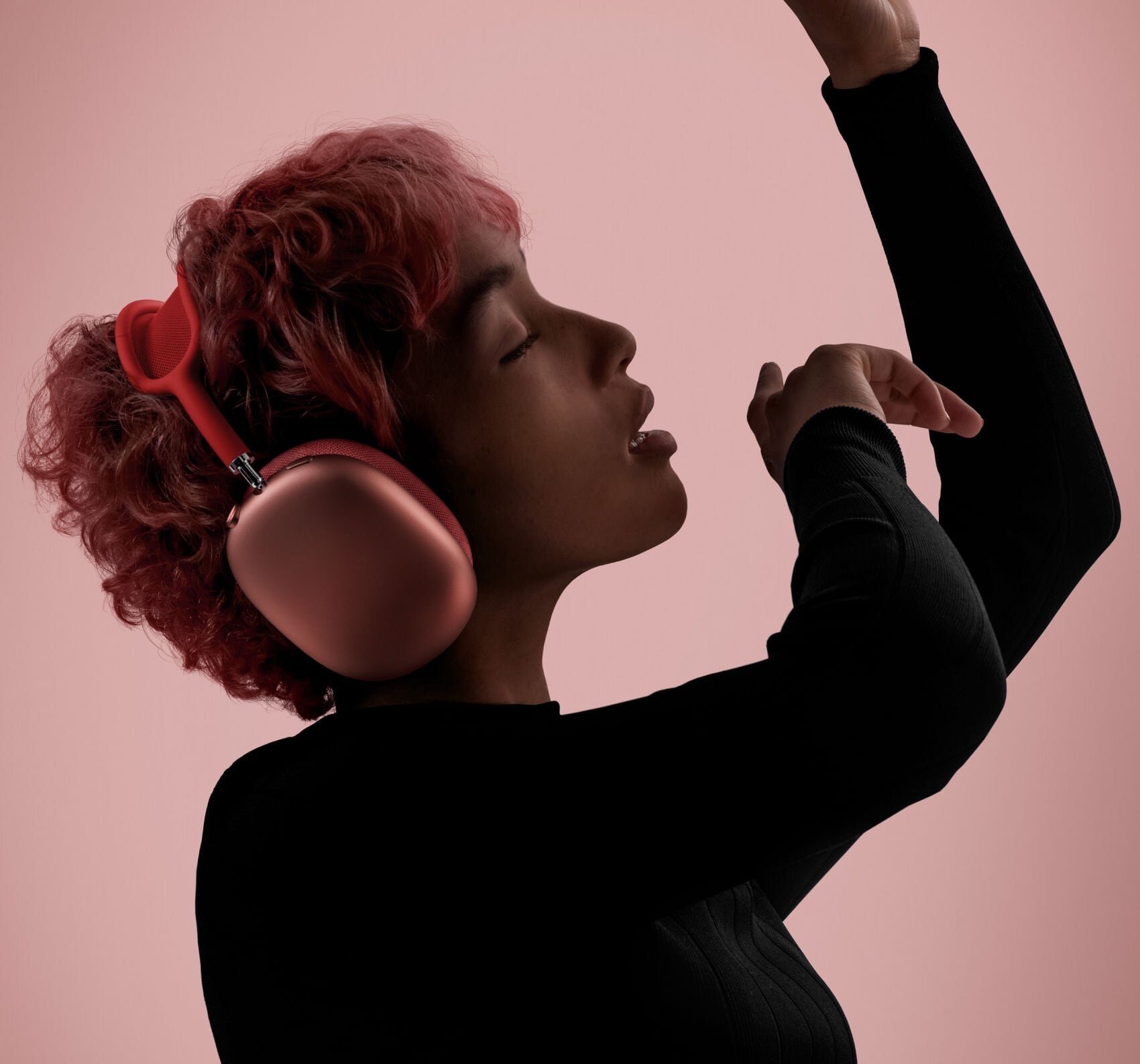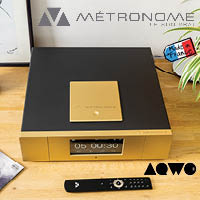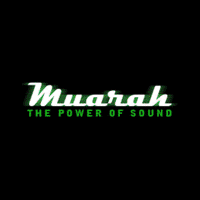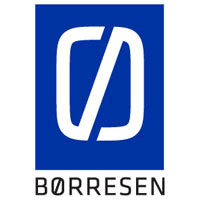HiFiman HE-R10P Closed-Back Planar Magnetic Headphones
Since its founding in 2007 in NYC (now located in Tianjin, China), Hifiman Electronics, known simply as Hifiman, has almost exclusively been offering over-ear, open-back planar magnetic headphones and more recently open-back electrostatic headphones. Noteworthy among their highly regarded planar magnetic releases include the HE400, HE1000 and HE1000se, the Sundara (review forthcoming) and Susvara, and even a wireless model, the Deva. Prices range from $169 for the HE400 up to $6000 for the highest-level planar magnetic model, the highly acclaimed Susvara.
Hifiman’s two electrostatic models are the Shangri-La Jr. and Shangri-La, each paired with a special electrostatic Hifiman amp and sold as a combo. The cost is $8000 for the Jr, reaching a mind-popping high of $50,000 for the truly extraordinary ‘Ultimate Flagship’ Shangri-La combo; its vacuum tube amplifier alone is a masterpiece of art—a must see (and hear, if you get a chance; I have been lucky to do so). There is no serious debate; Hifiman makes some of the finest such high-end audiophile quality headphones available, along with worthy competitors such as Audeze, Focal, Sennheiser, Grado, among others.
Hifiman also manufactures a variety of well received In-Ear monitors, portable music players and streamers with a wide range of pricing.
But what about high-end closed-back over ear headphones? After all, some audiophiles prefer such headphones: open-back will not work for some who need or like the intimacy, privacy and noise cancellation (on both sides of the cans); I’ve been lying in wait to see if and when Hifiman might make a move.
Now, after such a long and impressive run with open-back models, the good news is that Hifiman has jumped into the closed-back arena by releasing two new closed-back models: a closed-back dynamic driver headphone HE-R10 at $1,499, and the higher-end subject of this review: the HE-R10P Closed-Back Planar Magnetic Headphones at $5,500. Hifiman first started developing closed-back technology in 2012, but stopped in favor of open-back technology until 2018 when they returned in earnest; these two new models are the result.
I am very grateful to Adam Sohmer (Sohmer Associates, LLC, in Brooklyn NYC), for sending me a pair of the HE-R10P for review. Due to the ongoing Covid-19 pandemic, the last time I met Adam in person was here in Manhattan at the CanJam NYC 2020 in mid-February. The next in-person CANJAM NYC is scheduled for February 2022.
How do the Hifiman HE-R10P look and why?
Looking unlike any of their previous models of headphones, they look instead like a stunningly beautiful and luxurious re-design of the famous old SONY MDR-R10 closed-back headphones that were released in 1989 at the whopping price (for its time) of $2500 and discontinued about 20 years ago. They have similar looking large uniquely sculpted (with a slant) wooden ear cups and come delivered in a striking storage case (9” (W) x 6.5” (H) x 12”(L); brown with a latched top and luxurious black cloth inside. On top is a metal plate with `Hifiman HE-R10’ engraved on it) .
I queried Hifiman Founder and CEO Dr. Fang Bian (Ph.D in Nanotech Chemistry) about this obvious similarity and if he had any comments on how the SONY model motivated the creation of the Hifiman R10-P and affected its design. Here is his answer via email:
SONY R10’s ear cup might be the only design that can provide both significantly more volume and a non-bulky look as compared to the regular big circular shaped wood-bowls. The R10’s original dynamic driver does not require such a big volume though.
So, since big bowls for planar magnetic allow for more breathing space/air flow around the drivers (not an issue with open-back models), the SONY cup design with that slant brought the size down a bit for the R10-P where large cups are needed. Nice.
Putting aside any similarities with the Sony, I fondly detected what I would describe as a ‘Scandinavian’ simplicity, elegance and style to the R10-P design, including the fact that it has only one cable socket (not two in which there is one for each cup/channel) and it is a 3.5mm socket in the left ear cup. The vast majority of high-end expensive headphones have two, so, in my further queries to Bian, I asked about that.
I personally like a single-sided cable better. It is easier to use, more comfortable, and more reliable. Some people worry about the difference in cable length between the two channels, but we have enough room to store extra cable on one side, and keep the same cable length to both drivers. BTW, we believe wireless hifi will be the future, so we want to use wireless adapters with the R10-P. A single-sided cable design is much easier to work with an adaptor.
As for Bian’s comment about wireless: It turns out that the Hifiman wireless Deva model ($229) uses a Hifiman wireless adaptor called ‘BlueMini’ and it, too, has only one socket (3.5mm). The adaptor just snaps into it (the BlueMini has both a mini amp and DAC built within it) confirming the ease factor. Moreover, this same adaptor is already available for $49 as an optional that also works with the R10-P. I did not have time to explore this option for this review. Perhaps at a later date. Unless Hifiman is planning to create a higher-level such adaptor for the R10-P, I would think that the $49 BlueMini should be included with the R10-P as part of the $5,500 package.
As a final note, I also point out the exquisite cherry wood shell used for the cups are carved using CNC (computer numerical control) together with aviation grade aluminum and the black leather headband on top that can be pulled away from the cups in tightly held discrete stages to lengthen or shorten the fit on your head. Trying them on, they were immediately comfortable and remarkably light (only about 1 lb) given their large sized cups. The beauty and elegance of the R10-P kept me in awe. I never placed them back in the carrying case during this review; I left them out so I could look at them even when I was not using them.
Specifications
The HE-R10P have large planar magnetic drivers with nanometer thickness diaphragms with sub-micro thickness coating.
Frequency Response: 10-60 kHz
Sensitivity : 100db
Impedance : 30 Ohm
Weight: 460g
Socket: One 3.5mm Balanced Output (in the left cup)
3 detachable cables are included that have 3.5mm for the headphone socket but differ via jacks on the other end for input:
1 with a 3.5mm jack, 1 with a 1/4" jack, and 1 with an XLR balanced jack.
I point out that the included black-sleeved cables are of very high quality; these are not cheap stock cables by any means. I compared them while listening to some fine reference cables and they held up admirably well. (More on that later.)
Burn in
I was informed that since the HE-R10P I received were brand new, I should give the drivers some time, about 50 hours of playing, before serious listening. After all they are `speakers’ and we all know that speaker drivers do require some playing time in advance. For this task I used my handy PS Audio Sprout (cabled to the HE-R10P using the 1/4" jack) connected using Bluetooth wirelessly to my MacBook air playing Qobuz digital files in repeat mode (particularly overnight or while working) over 2-3 days while at the same time experimenting with various other setups and listening.
The (exceptional) bass benefited the most, but overall the sound became cleaner, smoother, airier and warmer sounding.
Different setups used
The specs on the HE-R10P, particularly the sensitivity (not too low at 100db) and the impedance (not too high at 30 Ohms) led me to believe in advance that the HE-R10P would not require very high power amplification to run well. This turned out to be true: these cans will work with just about anything within reason. As such, I found no urgent need to hunt down some kind of `optimal’ high-end headphone amp as might be the case with other high-end headphones. (But admittedly, I would have liked to have tried out some tube-based standalone headphone amps which I could have easily managed—if there were some audio shows to go to.) Here are the setups I used:
PS Audio Sprout as explained above (digital only); but also (for comparison in sound) I connected the MacBook Air with a USB cable to the Sprout instead of doing so wirelessly.
My home reference system’s components: PS Audio BHK preamplifier (it has a vacuum tube front end and a built-in headphone amplifier (1/4" jack)). Into the BHK for digital: Mojo Audio Pro Mystique DAC connected to a Mojo Audio Deja Vu music server with Roon Core and both Qobuz, Tidal and files on the Deja Vu’s internal storage for streaming. Into the BHK for vinyl: Pass Labs XP-17 Phono Stage, connected to a VPI Industries HW-40 Direct Drive turntable endowed with a Grado Labs Aeon3 cart.
A Mytek Brooklyn DAC + (powered by an external Mojo Audio Illuminati v2 power supply) connected to the Mojo Audio Deja Vu music server via USB for digital source. (Digital only.)
Direct connection to my MacBook Air (as music server and DAC) via the Hifiman 3.5mm cable (both ends). But I placed in between the remarkable tiny Periodic Audio Nickel amp (only 50mm x 30mm x 18mm, and 20 grams; $300) to add significantly more gain with great success. (Without the Nickel, the gain was way too low.)
For headphone cables: The three Hifiman cables shipped with HE-R10P, my reference Wireworld Nano Platinum Eclipse (1/4" jack; not manufactured anymore), and a brand new one: a 3 meter long Audio Art Cable HPX-1 Elite (Furutech CF-735SM(R) 3.5mm to Furutech CF-763SM(R) 1/4" ) that retails for $450.00 that was kindly made at short notice.
This involves a funny story involving my query number 2 to Bian about having only one 3.5mm into the HE-R10P instead of two. When I was in touch with Rob Fritz, Founder of Audio Art Cable, and found out he had a new headphone cable, I was happy to try it out and asked him to please send me one because of the review’s timing (I use several of his other cables now as reference.) What arrived was a beautifully hand-crafted black-sleeved cable but with two 3.5mm on one end and one 1/4" on the other! As is reasonable, Fritz assumed it would require the two on one end for the headphones. Once we realized the mistake, within a week the appropriate cable arrived. It turned out to be my favorite in sound quality for setup (2) and (3) above (I burned it in with the Sprout the same way I burned in the cans.) It matches extremely well with the sound characteristics of the HE-R10P (explained next).
Listening
Before I offer specifics of my listening, I did ask Bian another question:
My question: `Many high-end audiophiles do not believe that headphones can/will ever replace (sound-wise) the ‘listening experience’ of an elaborate expensive system with speakers with its large 3D sound stage, imaging within that soundstage and so on. What is your view on this?’
Bian’s response: At the same price level, a headphone system will let you experience much more detail and freq response than speakers. But a good speaker system (and a good room) is more enjoyable if we don’t consider the price difference because headphones can not let your body ‘feel’ the music.
Now down to business. I found that the HE-R10P offered an overall smooth and warm airy sound with superb clarity, deep bass, and the illusion of a soundstage much more spacious than I expected from closed-back headphones. There was an intimacy with (say) singers and small ensembles; singers were close up in front sometimes making you feel that they were sitting in your lap. Even after long listening sessions while lying on my back on a couch or the floor even (after all there is no `sweet spot’ with headphones), the comfort level of wearing them was enduring. And they made me appreciate lyrics more than I usually do.
Setup (2) above was my favorite in sound quality, bringing out a rich warmth, and it also allowed me to switch between vinyl and digital without any effort—using my own system. I could simply pull the headphone cable out of the preamp which would cause the music to come out of my speakers for comparisons. (It certainly confirmed Bian’s last sentence in his response above; but I already believed that.) But this solution would only be of use if one already has such an elaborate system with speakers.
Setup (3) was excellent with the HE-R10P and I highly recommend it. Even without the external power supply it offered great sound quality and worked like a charm. It easily powered the HE-R10P (it has two volume controls to choose from) and has two 1/4" headphone outputs. It is small, light and easy to carry around if you need to travel.
Setup (1) was surprisingly good, no power issues, and (4) with the Nickel was the quickest and easiest way to get music flowing (for headphones in general) without further ado; the MacBook Air serves as music server and DAC.
Music examples include:
‘Song of the Stars’, by Dead Can Dance from the 1996 album Spiritchaser. 16/44.1 FLAC. Exotic, and very creepy with extraordinary 3D sound effects of birds/percussion/singing; a remarkable sound stage exhibited by the HE-R10P. The main male singer seems to hover like a huge float up and center near your face (spooky). It keeps evolving with complex additional patterns, singers in chorus and more exotic percussion. Kept me on edge but truly fixated and fascinated.
‘You’ve Got a Secret’, Holly Cole, from the album Night, (2012), 16/44.1 FLAC. This piece illustrates how good the bass is on the HE-R10P, and yes, with her rich and sultry voice appears as if sitting in your lap as I mentioned earlier about singers; remarkable intimacy.
Chris Potter’s new album There is a Tide (Dec. 2020) 24/96 on Qobuz. What is certainly amazing here is that Potter (a tremendous sax player) plays every instrument himself and the HE-R10P let’s you carefully listen to each: piano, keyboards, electric and acoustic guitars, bass guitar, drums, clarinet, bass clarinet, flute, alto flute, percussion, samples and saxophones. Superb recording and performance by the super trumpet player Potter. He apparently was motivated to record this alone due to the pandemic.
‘And She Was’, from the Talking Heads album Little Creatures 1985 both vinyl and digital (Deluxe Version, 2006, 16/44.1 FLAC). Clear and powerful bass drum kick with punch and drive shown off by the HE-R10P. And given what we have been thru for the last 4 years: Follow with Don’t Worry About the Government from the Talking Heads album Talking Heads: 77.
Vinyl: Columbia 6 eye stereo pressing CS8456 Someday my Prince will Come, Miles Davis Sextet (1961). This was given to me by a friend mixed in with a bag of other LPs that had been given to him by a neighbor. It was in pristine shape. The first piece, Someday my Prince Will Come, grabs you right away with Billy Cobb’s cymbal work (that bell) and drums quickly capturing your attention from the right ear cup; then suddenly out jumps front and center Miles on trumpet, piano out of the left cup and bass seemingly coming from behind Miles. Very nicely showing off the HE-R10P’s ability to capture the individual instruments as if located in different places on stage.
Summary
Hifiman’s bold entry into the closed-back arena with the HE-R10P is a success. If you are looking for a very high-end pair of closed-back planar magnetic headphones and can afford it but are not bothered by the large cups, these are worth seeking out. Offering exceptional sound quality, they can be powered easily, are beautiful and luxurious, not especially finicky about what kind of amplification is needed, are easy to connect and can even go wireless.
Further information: Hifiman






























